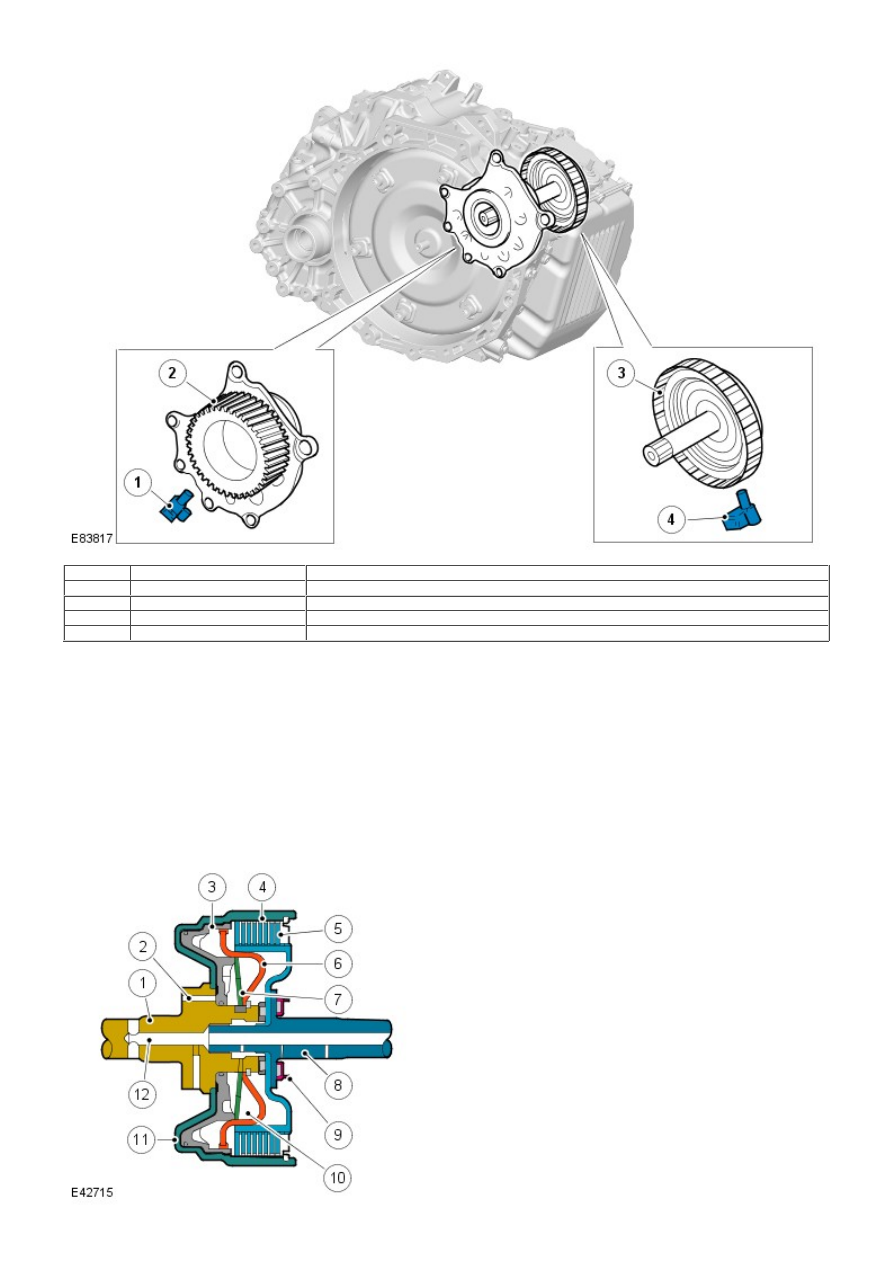Frelander 2. Manual - part 321

Item
Part Number
Description
1
-
Speed Sensor (SP) - Output shaft speed
2
-
Counter drive gear
3
-
C2 clutch drum
4
-
Speed sensor (NIN)
Two speed sensors (NIN and SP) are used in the transmission and are located within the transmission housing. Speed
sensor (SP) is located adjacent to the counter drive gear and reads from the gear teeth to provide an output shaft speed
signal. Speed sensor (NIN) is located adjacent to the clutch C" drum and reads off teeth on the outer circumference of the
drum to provide an input shaft speed. Both speed signals are received by the TCM which uses the 2 signals to calculate
engine torque output, shift timing and torque converter lock-up.
Fluid Temperature Sensor
The fluid temperature sensor is integrated into the internal wiring harness within the transmission. It detects the fluid
temperature in the hydraulic pressure control circuit and transmits a signal corresponding to the temperature to the TCM.
The TCM monitors the temperature and provides smooth gear shifts across a wide range of temperatures.
DRIVE CLUTCHES
Multiplate Drive or Brake Clutch – Typical